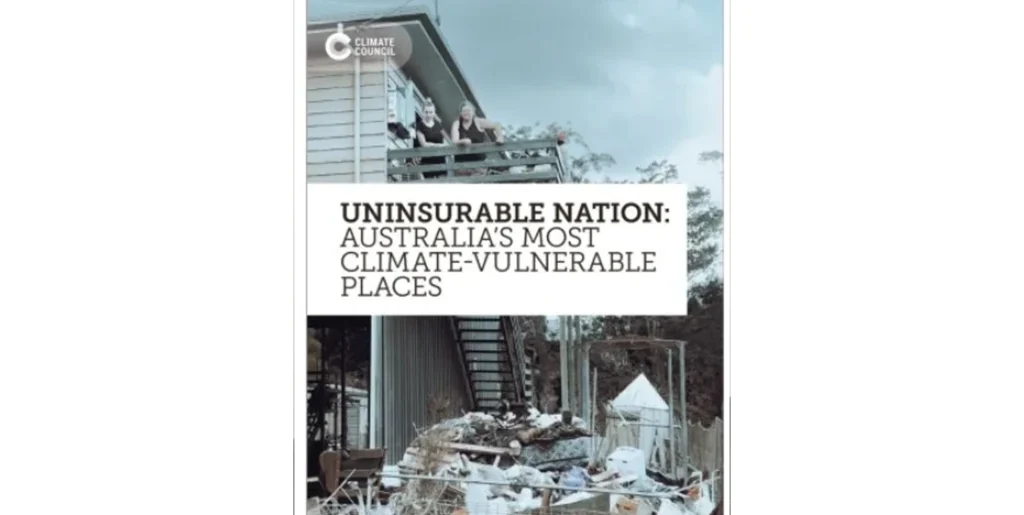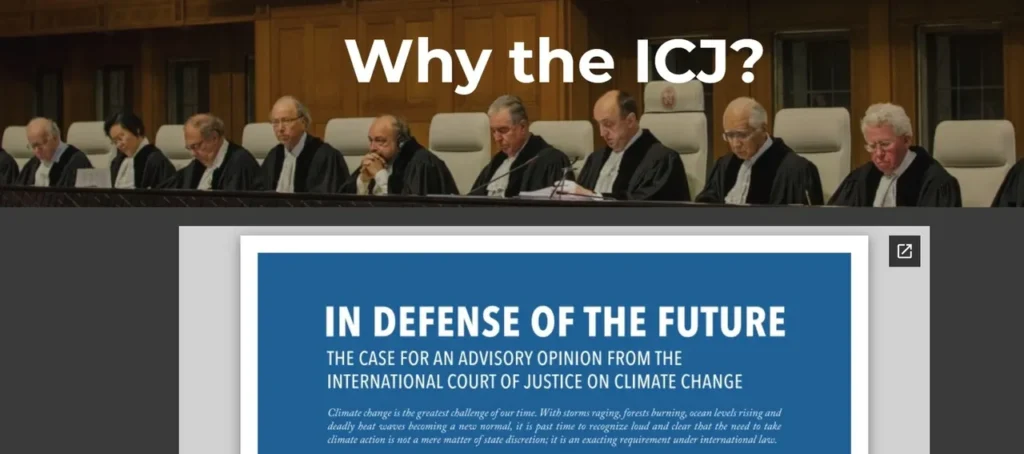
While climate change, driven by the burning of coal, oil and gas, affects all Australians, the risks are not shared equally and in the most extreme instances, areas may become uninhabitable, according to the Climate Council.
Worsening extreme weather means increased costs of maintenance, repair and replacement to properties – our homes, workplaces and commercial buildings. As the risk of being affected by extreme weather events increases, insurers will raise premiums to cover the increased cost of claims and reinsurance.
Insurance will become increasingly unaffordable or unavailable in large parts of Australia due to worsening extreme weather, the Climate Council reports.
Its latest report, called Uninsurable Nation: Australia’s most climate-vulnerable locations, outlines the top 20 most at-risk federal electorates to climate change-related extreme weather events, providing a brief profile of the top 10. The report also outlines the most at risk electorates for each state and territory on an interactive climate risk map (see What you can do, below, for the link).
Key findings
1. Climate change is creating an insurability crisis in Australia due to worsening extreme weather and sky-rocketing insurance premiums.
The Climate Council has produced a ranking of the top 10 most at risk electorates from climate change and extreme weather events (covering bushfires, extreme wind and different types of flooding), based on the percentage of ‘high risk’ properties in each federal electorate across Australia.
Across Australia approximately 520,940 properties, or one in every 25, will be ‘high risk’, having annual damage costs from extreme weather and climate change that make them effectively uninsurable by 2030. In addition, 9% of properties (1 in 11) will reach the ‘medium risk’ classification by 2030, with annual damage costs that equate to 0.2-1% of the property replacement cost. These properties are at risk of becoming underinsured.
2. Climate change affects all Australians, but some federal electorates face far greater risks than others.
The top 10 most at-risk federal electorates by 2030 are:
– 1. Nicholls (Vic) – 2. Richmond (NSW) – 3. Maranoa (QLD) – 4. Moncrieff (QLD), – 5. Wright (QLD), – 6. Brisbane (QLD), – 7. Griffith (QLD), – 8. Indi (Vic) – 9. Page (NSW) and – 10. Hindmarsh (SA).
In these at-risk electorates, 15% of properties (165,646) or around one in every seven properties will be uninsurable this decade.
In the electorate of Nicholls in Victoria, which covers the Local Government Areas (LGAs) of Campaspe, Greater Shepparton, Moira, and parts of Strathbogie and Mitchell, 26.5% of properties will be uninsurable by 2030. In the LGA of Greater Shepparton, it is as many as half (56% of properties), and almost 90% in the locality of Shepparton.
By 2030, 40 federal electorates across Australia will have 4% of properties classified as ‘high risk. Eighteen of these electorates (or 45%) are in Queensland. The top five most at-risk electorates in Queensland are: Maranoa, Moncrieff, Wright, Brisbane and Griffith.
The percentage of properties that will be uninsurable by 2030 in each state and territory is 6.5% in Queensland; 3.3% in NSW; 3.2% in South Australia; 2.6% in Victoria; 2.5% in the Northern Territory; 2.4% in Western Australia; 2% in Tasmania and 1.3% in the ACT.
3. Riverine floods are the most costly disaster in Australia.
Riverine flooding poses the biggest risk to properties. Of the properties classified as uninsurable by 2030, 80% of that risk is due to riverine flooding.
Bushfires and surface water flooding (sometimes called flash flooding) are the other major worsening hazards causing properties to become uninsurable by 2030.
The five most at-risk electorates for riverine flooding are: Nicholls in Victoria, Richmond in New South Wales (including the towns of Ballina, Bangalow, Brunswick Heads, Byron Bay, Hastings Point, Kingscliff, Lennox Head, Mullumbimby, and Tweed Heads), and Maranoa (in rural southwestern Queensland, including the towns of Roma, Stanthorpe, Winton and Warwick), Brisbane, and Moncrieff in Queensland (part of the Gold Coast).
Across Australia, 2.5% of properties (360,691 properties) will be at ‘high risk’ of riverine flooding by 2030, with a further 372,684 at ‘medium risk’ of riverine flooding.
4. Decisions and actions over this next term of government will influence the future impacts of climate change for generations to come.
Unfortunately over the last eight years, the Federal government has failed to meaningfully tackle climate change or prepare Australians for worsening extreme weather.
A key test for all candidates in the upcoming Federal Election is whether they are supporting policies that drive deep emissions cuts now through the 2020s, aligned with limiting the global average temperature rise to well below 2°C.
There is also an urgent need to upscale investment in national adaptation and disaster risk reduction funding to help Australians better prepare for worsening extreme weather events.
What you can do
1. Check out the Climate Council report
2. Use their interactive map to determine how at risk your home and community will be by 2030
3. Take steps to find out what you can do locally to hold political leaders to account for fixing the climate crisis


